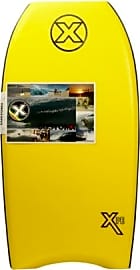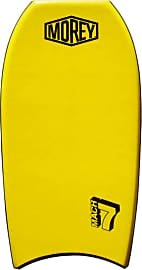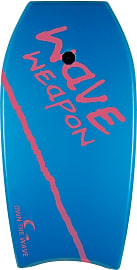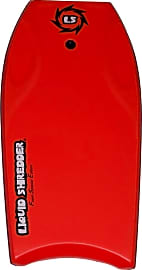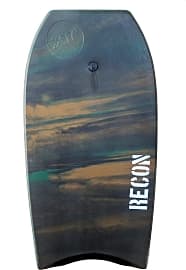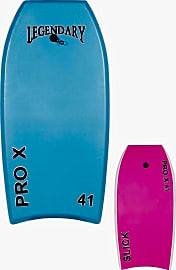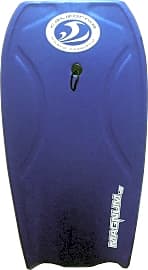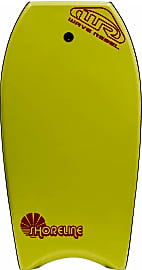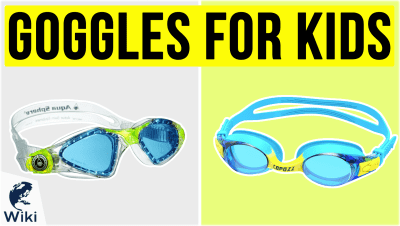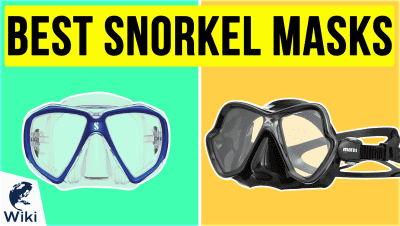The 10 Best Bodyboards

This wiki has been updated 36 times since it was first published in February of 2016. Bodyboards are a tremendous way to enjoy a day at the beach, and they make for an entertaining and addictive form of exercise as well. The models we have selected include options that are appropriate for riders of every skill level, regardless of age, weight, or height. And if you're particular about design, you'll be happy to know that there are tons of colors and patterns to choose from. When users buy our independently chosen editorial picks, we may earn commissions to help fund the Wiki.
Editor's Notes
April 21, 2019:
When choosing a bodyboard, the most important features to look out for are buoyancy, a hydrodynamic tail, a slick exterior that glides well, and, of course, extras like ankle leashes. Though many of the boards in this list have similar shapes, the details are what distinguish one from the next. Some have molded "handle" areas that make it easier to achieve a secure grip, while others sport no-frills designs that are well-suited to casual beach fun — and also tend to be a bit more affordable.
The California Board Company Clutch and Younger Super Perfect were taken off the list due to availability concerns, though the former was replaced by the similarly shaped Magnum 45 from the very same manufacturer. The GYN Trade Legendary is another new addition, chosen due to plentiful color and pattern options, as well as high reviews among bodyboarders of varying skill levels.
What Separates One Bodyboard from Another
The first thing you'll want to consider is a bodyboard's dimensions.
To the layman, the majority of bodyboards probably look alike. Only they're not, and the details could make a significant difference in the quality of each ride. To find a board that's right for you, it makes good sense to take certain details into account.
The first thing you'll want to consider is a bodyboard's dimensions. A lot of boards are custom-made to support a person of a specific size. Size recommendations (i.e., height and weight) are generally listed in any board's description. If you're in a store, ask to look at boards that are made for a person of your height.
The second thing you'll want to consider is the bottom of the board. The sleekest bottoms, which is to say the ones that deliver the most dynamic rides, are made of polyethylene, polypropylene, or some other equivalent poly-plastic thereof. Certain bottoms may also feature channels, or rivets. Channels can help a board skim faster, but if they're built too deep, they can slow a board down.
The third thing you'll want to consider is how a board will stand up to the elements. With that in mind, you'll want to read some of the customer reviews. Customers have spent a considerable amount of time with each bodyboard, and they're subjectively inclined to tell the truth.
As a precaution, make sure that any board you're interested in has been designed with a leash for your arm. Leashes will prohibit you from losing the board, but they can also keep the board from going rogue and hitting bystanders, or any rocks along the beach.
Bodyboarding 101: A Guide For Beginners
Catching waves on a bodyboard begins with waxing that board down to ensure a steady grip. Unlike waxing a surfboard, however, waxing the center of a bodyboard will actually limit your mobility by causing the board to stick to your chest. That being the case, elite boarders recommend only waxing the top corners of a bodyboard, along with the handles on each rail.
That being the case, elite boarders recommend only waxing the top corners of a bodyboard, along with the handles on each rail.
Before you enter the water, make sure that the bodyboard's leash is attached to your bicep (as opposed to your ankle). Paddle out to where the waves are breaking, pointing the nose of your board down so that you can duck dive under the current. Once you see a wave approaching, use your arms to stay a few feet in front of its crest. As you feel the wave take hold, it's time to settle in and grab the board with both hands.
As the wave crashes, you'll want to use the edges of your board as if they were bike handles. Pull up on the right, and the board will veer to the left. Pull back, and you can steer your way out of a wave. The one thing you'll want to avoid is pointing the nose of the board down during a ride. Pointing the nose down might send you cartwheeling (with the good news being that the board is supporting your weight, which means you'd have to push down pretty hard).
Once you've gotten a few waves under your belt, you can start to focus on maneuvering to enjoy a more dynamic, and sustainable, ride.
A Brief History of The Bodyboard (By Way of Its Creator)
Tom Morey, a lifelong surfer, originally came up with the idea for a bodyboard as the result of a spiritual awakening. In 1970, Morey became immersed in a Persian faith known as Bahá'í, which was centered upon promoting the inherent unity of mankind. Over the course of a year, Morey kept returning to a certain Bahai mantra: "Convey upon me a thought which will turn this planet into a rose garden." This mantra inspired Morey to invent a bodyboard, which he then marketed as a Boogie Board, based on his love of music and songs.
His credibility meant that the Boogie Board would not be ignored.
Tom Morey had grown up in Southern California, where, as a young adult, he had manufactured his own surfboards. Morey knew the surfing culture, and, more importantly, he knew the surfers themselves. His credibility meant that the Boogie Board would not be ignored. It also meant that surfing physics had played an integral role in the fledgling bodyboard's design.
Morey's board took off, and within a few years, soft-foam bodyboards began to replace the inflatable river rafts of old. Morey sold his company to Wham-O in 1986. Over the ensuing two decades, bodyboarding became a multi-million-dollar industry. Bodyboarders were estimated to outnumber their surfing counterparts by a ratio of 6:1 as of 2004. One decade later there are countless manufacturers putting their own twist on the bodyboard. You can see a sample of the best on the market above.



